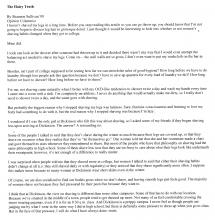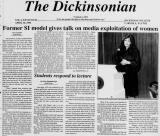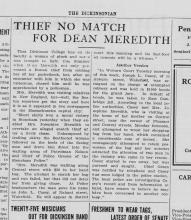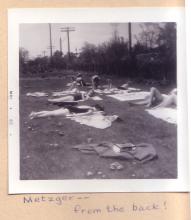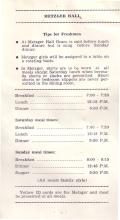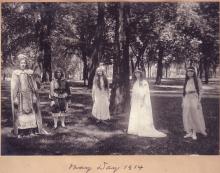The Social Situation: For the Guidance of Dickinson Women
Found in Marion Bell's personal scrapbook from her years at Dickinson College (1941-46), this document of six pages outlines female regulations in dress and socialization in games, bars, dancing, and dining, with a special section regarding social possibilities on Sundays. It also includes rules regarding curfews, tardiness, noise disturbances, and distinctions between freshman women and upperclassmen not "on rules- those having a 75 average." It even provides a section for transfer students.
"Metzger Girls are Not to Wear Pants or Slacks"
Clipped from a newspaper between 1941 and 1946 and placed in Marion Bell's personal scrapbook, this snippet shows the rules and regulations regarding women's attire at Dickinson. Marion Bell was known to wear slacks and this made her quite a rebel against this school rule. See Marion Bell, the Anti-Anti Bifurcationist.
Western Look Influences Women's Fashions
Ditti Weinel wrote of the influence of the Western look on East Coast campuses in The Dickinsonian. This look included jumpers, shifts and separates in rich, warm colors. Weinel ends: "So out of the Golden West come sporty, but feminine, fashions with an air of casual living and a touch of tailored elegance to teach those 'citified' Easterners what it's like to be well dressed."
Fashion House Clothes Equal to Any Emergency
In another Fashion House advertisement in The Dickinsonian, Sue, the heroine of the mini-story, is speaking with her friend. Judy tells her that the man who committed some wrong against her was "sorry, and he's downstairs now." After a moment of hesitation, Sue decides to meet him downstairs and dons a villager corduroy shift before checking her appearance. The moral, explains the advertisement's copy, is that "Fashion House clothes are equal to any emergency in life's little adventures."

